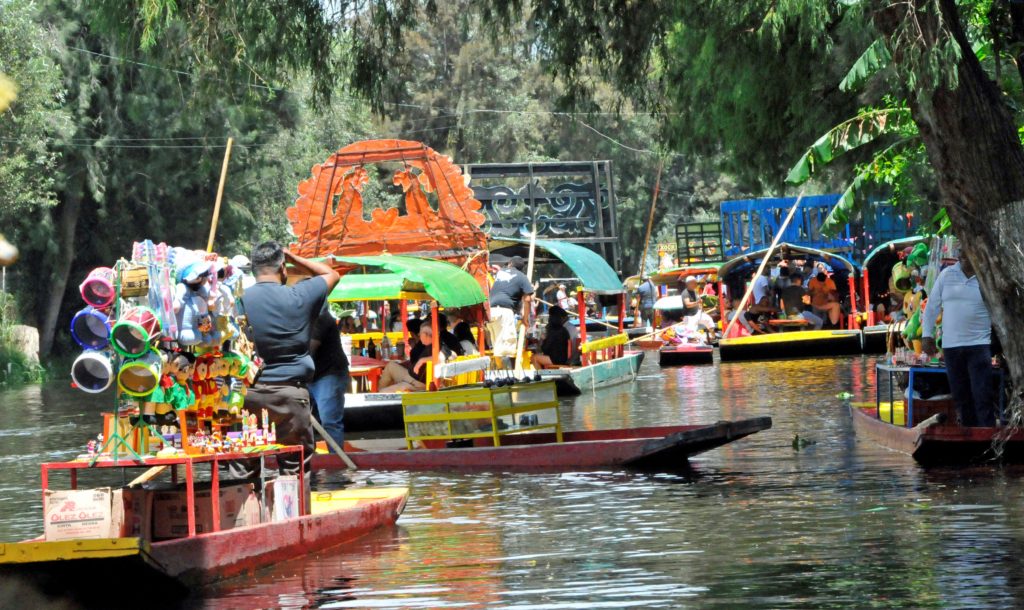
Xochimilco’s canals are among Mexico City’s most popular attractions, providing colorful entertainment in an important historical context.
When Spanish Conquistadors arrived in what is now central Mexico, Tenochtitlan, with a population of about 200,000, was the capital of the Aztec Empire. The Spanish destroyed Tenochtitlan in 1521 and built Mexico City over the ruins, making it their capital. Tenochtitlan/Mexico City was situated on an island in Lake Texcoco, connected to other lakes and cities in the Mexico Valley, including Xochimilco, by an elaborate network of causeways and canals. As Mexico City grew, residents drained and filled the lakes and canals. Only a few of the canals remain. The most important are in Xochimilco, now a borough of Mexico City about 17 miles south of the city’s historical center. Because of their historical significance and need for preservation, Xochimilco’s 114 miles of canals became a UNESCO World Heritage Site in 1987.
Unlike most historical sites, Xochimilco’s canals attract young people out for a good time. Visitors board one of about 200 vibrantly painted boats called “trajineras,” based on designs once used by the Aztecs and accommodating about twenty revelers. Pole men and women propel and steer the flat bottom wooden boats along the canals, gondola style. Smaller boats pull alongside, hawking food, drink, and an assortment of gewgaws. For a fee, boat-borne musicians will entertain with mariachi music, but after a while, the singing of alcohol-loosened passengers can drown out the sounds of the bands. Man-made islands in the canals, called “chinampas” (floating gardens), grow flowers that are sold in markets along the banks. On weekends, Xochimilco’s canals are so crowded and the steering of the trajineras so imprecise that the boats are built to survive frequent bumping. For visitors to Mexico City, Xochimilco’s canals are a must do.
Comments are closed.